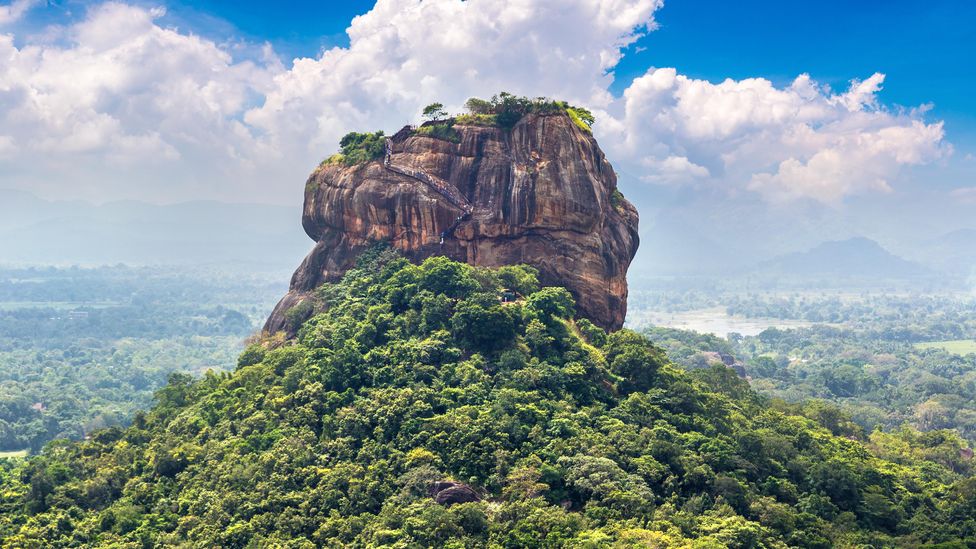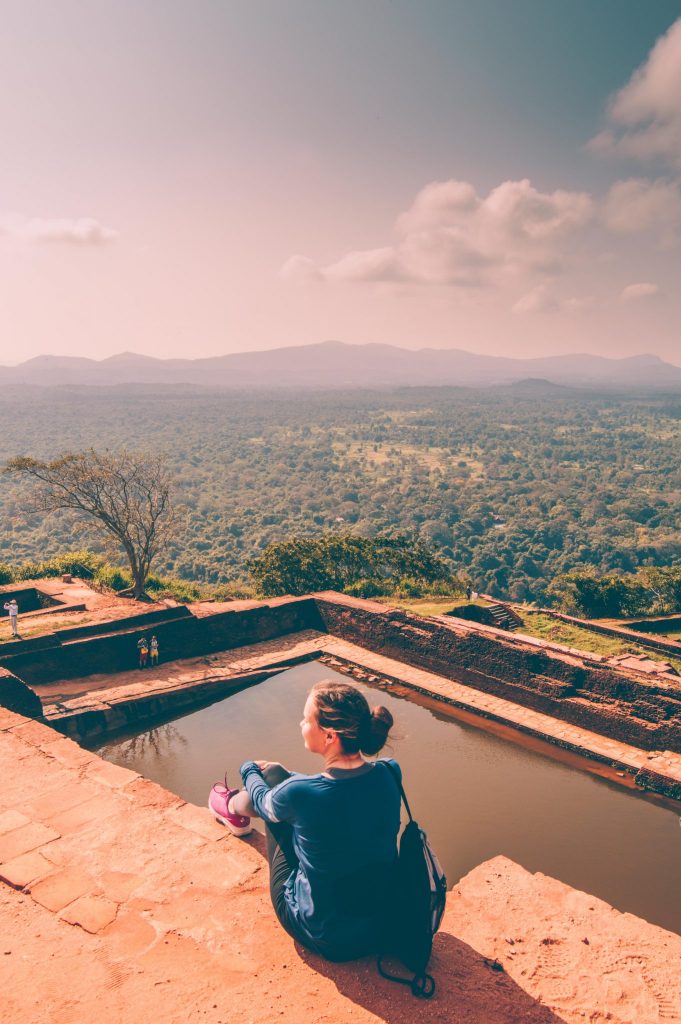

The enigmatic rocky outcrop of Sigiriya is Sri Lanka's single most dramatic sight.
Located in the Matale district, Dambulla Cave Temple is a set of more than 80 large rock-cut, cave temples in Central Sri Lanka. However, majority of the attractive murals and Buddha statues are concentrated in 5 main shrines which are the most impressive. Dambulla Cave Temple Complex holds an important place in the history of Buddhism because of the fact that it has been continuously used as a place of worship for more than two centuries now. Another specialty is that the caves have been painted in such a manner that devotees can systematically move through the spaces and rituals at the same time.


Sigiriya is one of the most valuable historical monuments of Sri Lanka. Referred by locals as the Eighth Wonder of the World this ancient palace and fortress complex has significant archaeological importance and attracts thousands of tourists every year. It is probably the most visited tourist destination of Sri Lanka. The palace is located in the heart of the island between the towns of Dambulla and Habarane on a massive rocky plateau 370 meters above the sea level. Sigiriya rock plateau, formed from magma of an extinct volcano, is 200 meters higher than the surrounding jungles. Its view astonishes the visitors with the unique harmony between the nature and human imagination.
The fortress complex includes remnants of a ruined palace, surrounded by an extensive network of fortifications, vast gardens, ponds, canals, alleys and fountains. The surrounding territories of Sigiriya were inhibited for several thousand years. Since 3th century BC the rocky plateau of Sigiriya served as a monastery. In the second half of the 5th century king Kasyapa decided to construct a royal residence here. After his death Sigiriya again became a Buddhist monastery until the 14th century, when it was abandoned. The main entrance is located in the northern side of the rock. It was designed in the form of a huge stone lion, whose feet have survived up to today but the upper parts of the body were destroyed. Thanks to this lion the palace was named Sigiriya. The term Sigiriya originates from the word Sihagri, i.e. Lion Rock. The western wall of Sigiriya was almost entirely covered by frescoes, created during the reign of Kasyapa. Eighteen frescoes have survived to this day.
The frescoes are depicting nude females and are considered to be either the portraits of Kasyapa's wives and concubines or priestess performing religious rituals. Despite the unknown identity of the females depicted in the frescoes, these unique ancient paintings are celebrating female beauty and have incredible historical significance. One of the most striking features of Sigiriya is its Mirror wall. In the old days it was polished so thoroughly that the king could see his reflection in it. The Mirror wall is painted with inscriptions and poems written by the visitors of Sigiriya. The most ancient inscriptions are dated from the 8th century. These inscriptions are proving that Sigiriya was a tourist destination more than a thousand years ago. Today, painting on the wall is strictly prohibited.
A welcome effect of visiting during the pandemic meant my partner and I had the entire complex to ourselves for several hours. While the once-plastered-and polished finishings of the water gardens have disappeared with time, we could still see the brick foundation outlines of the pools, fountains and streams that fill with water during the rainy season. One area, known as the "miniature water gardens" (not-so miniature; measuring 30m wide and 90m long), was split into five sections with several unique features including a snake-shaped stream that required structural planning way ahead of its time. "A striking feature is the use of these water-surrounds with pebbled or marbled floors, covered by shallow, slowly moving water. These, no doubt, served as a cooling device and at the same time had great aesthetic appeal, creating interesting visual and sound effects," wrote Bandaranayake. Theorised to have been used by the royal family and Kasyapa's consort of women, these fountains and pools, especially the large pond on top of Sigiriya, were designed as swimming pools to give relief from the hot South Asian sun, complete with stone steps leading down into the water. But beyond their beauty and practicality, the water gardens had another purpose. "Kasyapa wanted to present water in a particular way," said Weerasinghe. As well as being used for pleasure, they also sent a strong message of his power and ingenuity to anyone who doubted King Kasyapa, especially Mahavihara monks, who made up the most powerful monastery in Anuradhapura and were in favour of his father.
It may not look like much more than a large rock....
This square rock rises from the jungle, a spectacular ....
Rising from the lush jungle cover of Sri Lanka's central plains....